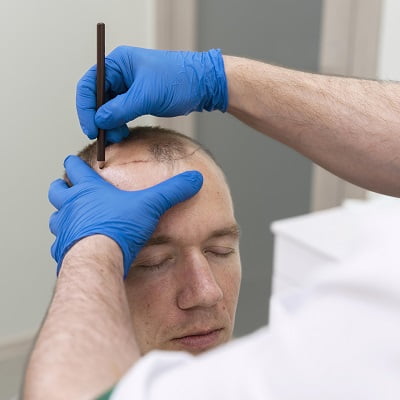
Hair loss is a common concern for many individuals, causing significant emotional distress and affecting their self-esteem. Over the years, the field of Hair Transplantation In Islamabad has undergone a remarkable evolution, revolutionising the way we approach hair restoration.
From crude techniques to sophisticated procedures, advancements in technology and medical expertise have propelled the effectiveness and naturalness of hair transplantation.
In this blog, we will delve into the fascinating journey of how hair transplantation has improved through evolution.
Evolution of Techniques:
Punch Grafts:
In the early days of hair transplantation, punch grafts were the prevailing technique. This method involved removing round grafts of hair follicles from the donor area and transplanting them onto the balding areas. However, the results often appeared unnatural due to the large size of the grafts and the “doll’s hair” appearance.
Mini/Micro Grafts:
As the field advanced, mini and micro grafts were introduced. These smaller grafts contained fewer hair follicles, allowing for more precise placement and a more natural-looking hairline. Although an improvement, the results were still limited due to the unnatural grouping of the grafts.
Follicular Unit Transplantation (FUT):
The introduction of FUT revolutionized the field of hair transplantation. FUT involves removing a strip of tissue from the donor area, dissecting it into individual follicular units, and transplanting them into the balding areas. This technique enabled the transplantation of naturally occurring hair follicular units, resulting in more natural-looking results.
Follicular Unit Extraction (FUE):
FUE (Follicular Unit Transplantation) emerged as an alternative to FUT, offering several advantages. Instead of a strip harvest, individual follicular units are extracted directly from the donor area using a tiny punch-like instrument. This minimally invasive approach eliminated the need for stitches, resulting in faster healing and reduced scarring. FUE also allowed for harvesting hair from other body areas, such as the beard or chest, increasing the donor supply.
Technological Advancements:
Here are the most advanced techniques that are used to perform hair restoration or Hair Transplantation In Islamabad:
Robotic Hair Transplantation:
The advent of robotic systems, such as the ARTAS system, has further improved the precision and accuracy of hair transplantation. These robots use advanced algorithms and artificial intelligence to select and extract individual follicular units, enhancing the efficiency of the procedure.
Platelet-Rich Plasma (PRP) Therapy:
PRP therapy has gained popularity as an adjunct to hair transplantation. It involves extracting the patient’s blood, processing it to concentrate platelets, and injecting the platelet-rich plasma into the scalp. PRP stimulates hair growth and enhances healing, leading to improved results and faster recovery.
Laser-Assisted Hair Transplantation:
Laser technology has been incorporated into hair transplantation, aiding in the precision of recipient site creation and ensuring optimal graft survival. The use of lasers minimises trauma to the surrounding tissues and allows for faster healing.
Hair Cloning and Stem Cell Therapy:
While still in the experimental stages, hair cloning and stem cell therapy hold immense promise for the future of hair transplantation. These techniques involve replicating hair follicles in the laboratory or stimulating the regeneration of dormant hair follicles, providing potential solutions for extensive hair loss.
Improved Naturalness and Aesthetics:
The evolution of hair transplantation techniques and technologies has greatly enhanced the naturalness and aesthetics of the results. Hairlines are now meticulously designed to mimic natural hair growth patterns, taking into account factors such as hair direction, density, and angle. Surgeons also consider the patient’s age, facial features, and future hair loss patterns to create an age-appropriate and harmonious hairline.
The Bottom Line!
Hair transplantation has come a long way since its inception, evolving from crude techniques to sophisticated procedures that produce natural and aesthetically pleasing results.
Advancements in technology, surgical techniques, and medical understanding have transformed the field, allowing individuals with hair loss to regain their confidence and restore their self-image.
You can visit Royal Cosmetic Surgery Islamabad for the best and most effective hair restoration treatments. As we continue to push the boundaries of innovation, the future of hair transplantation holds even more exciting possibilities, promising hope for those seeking effective solutions to hair loss.











Book Appointment